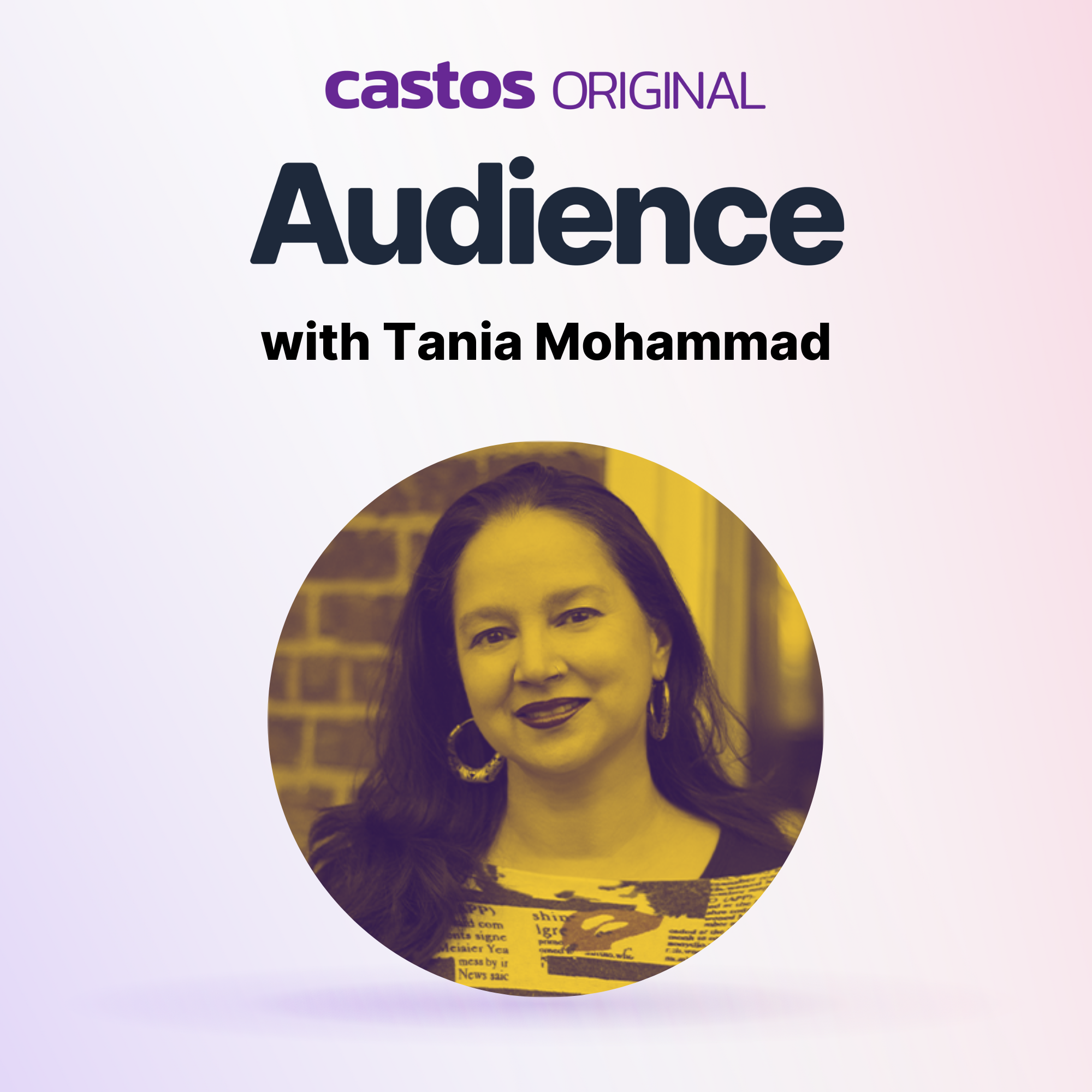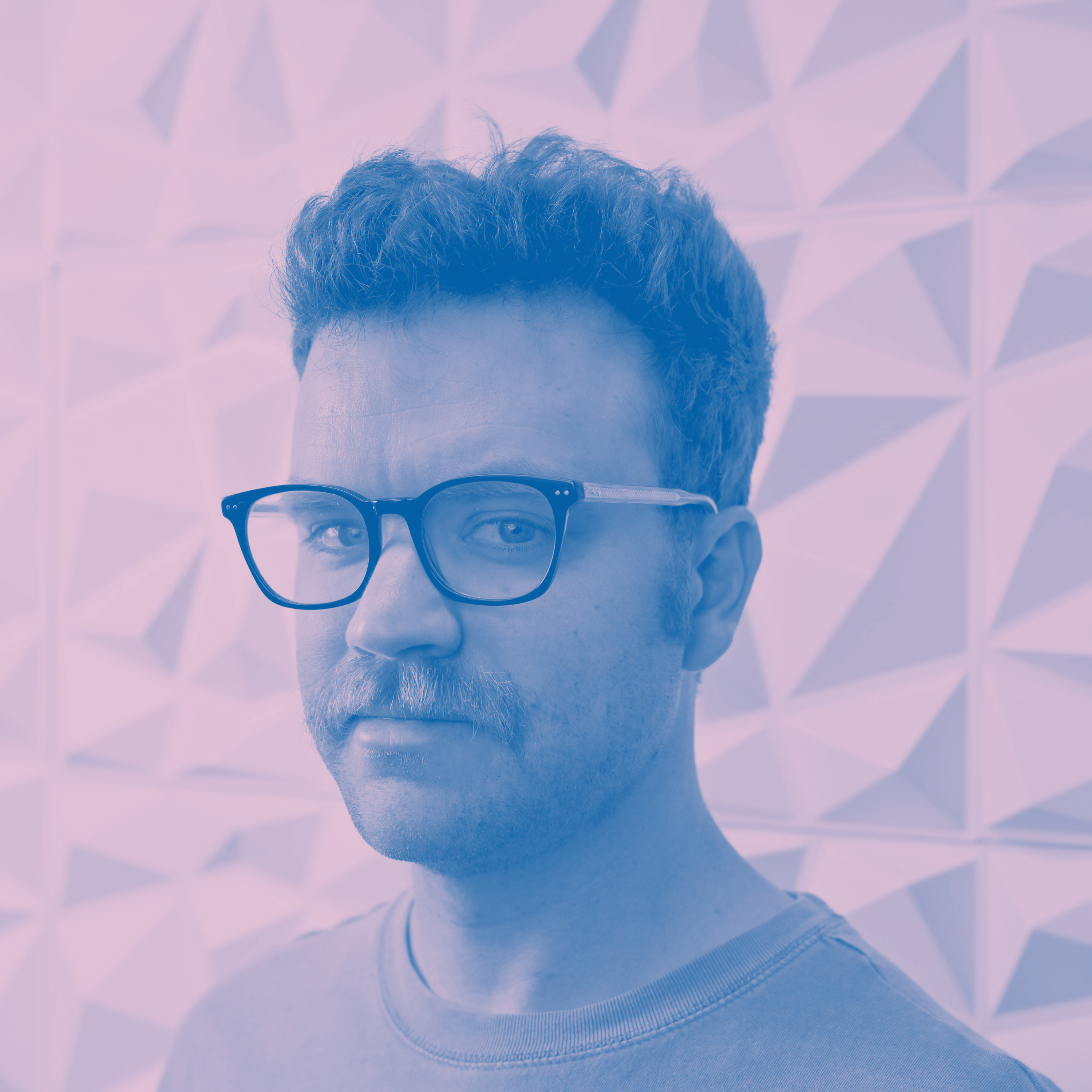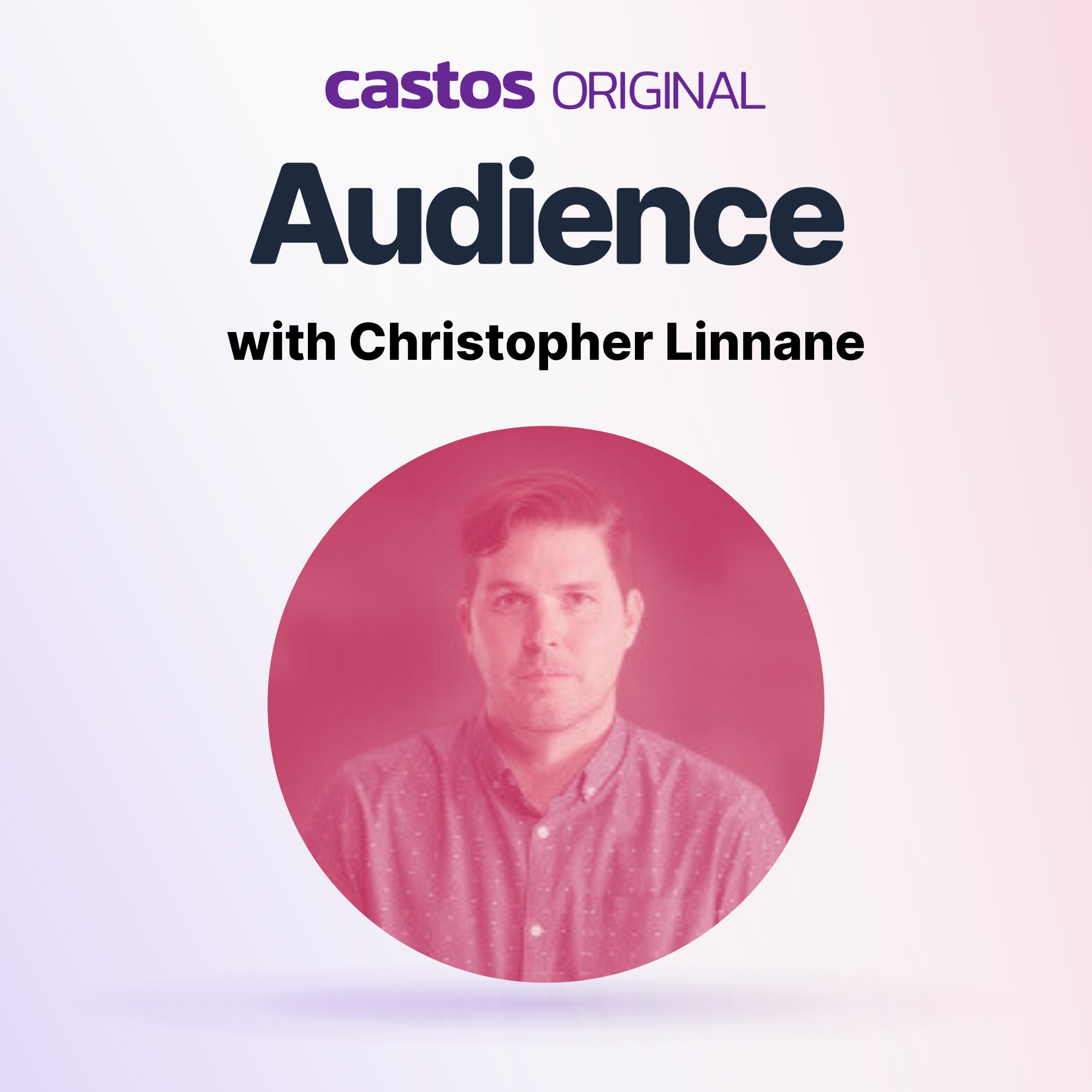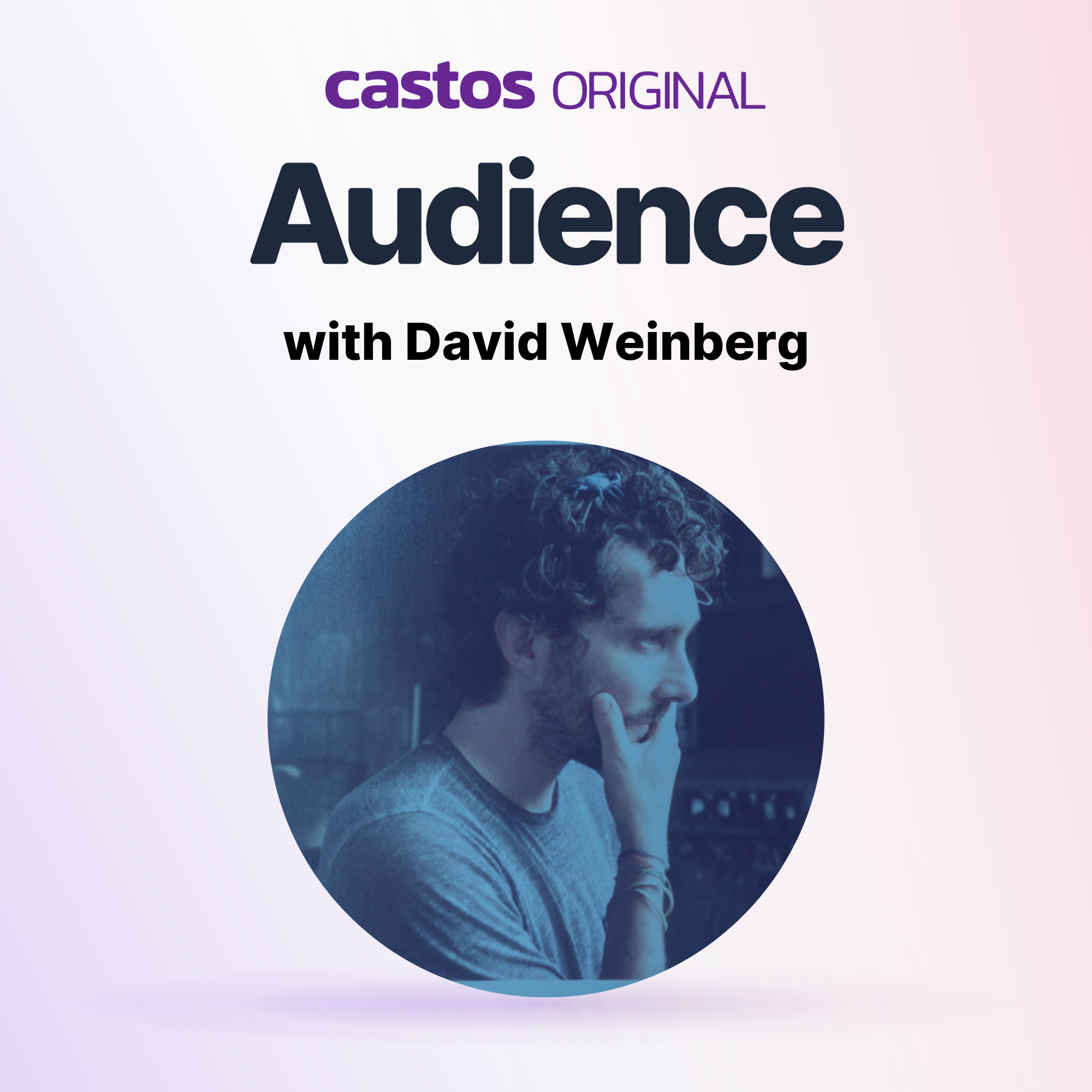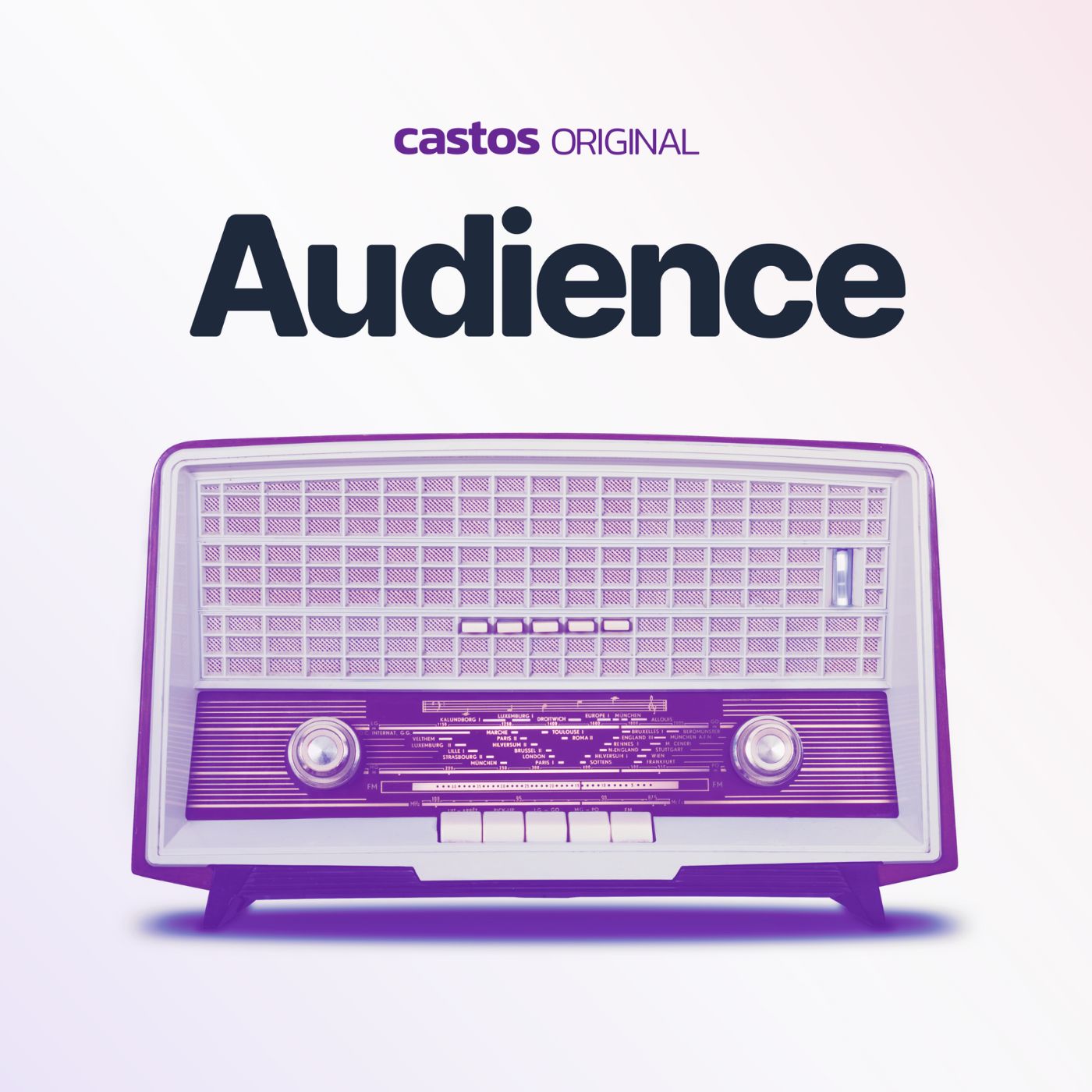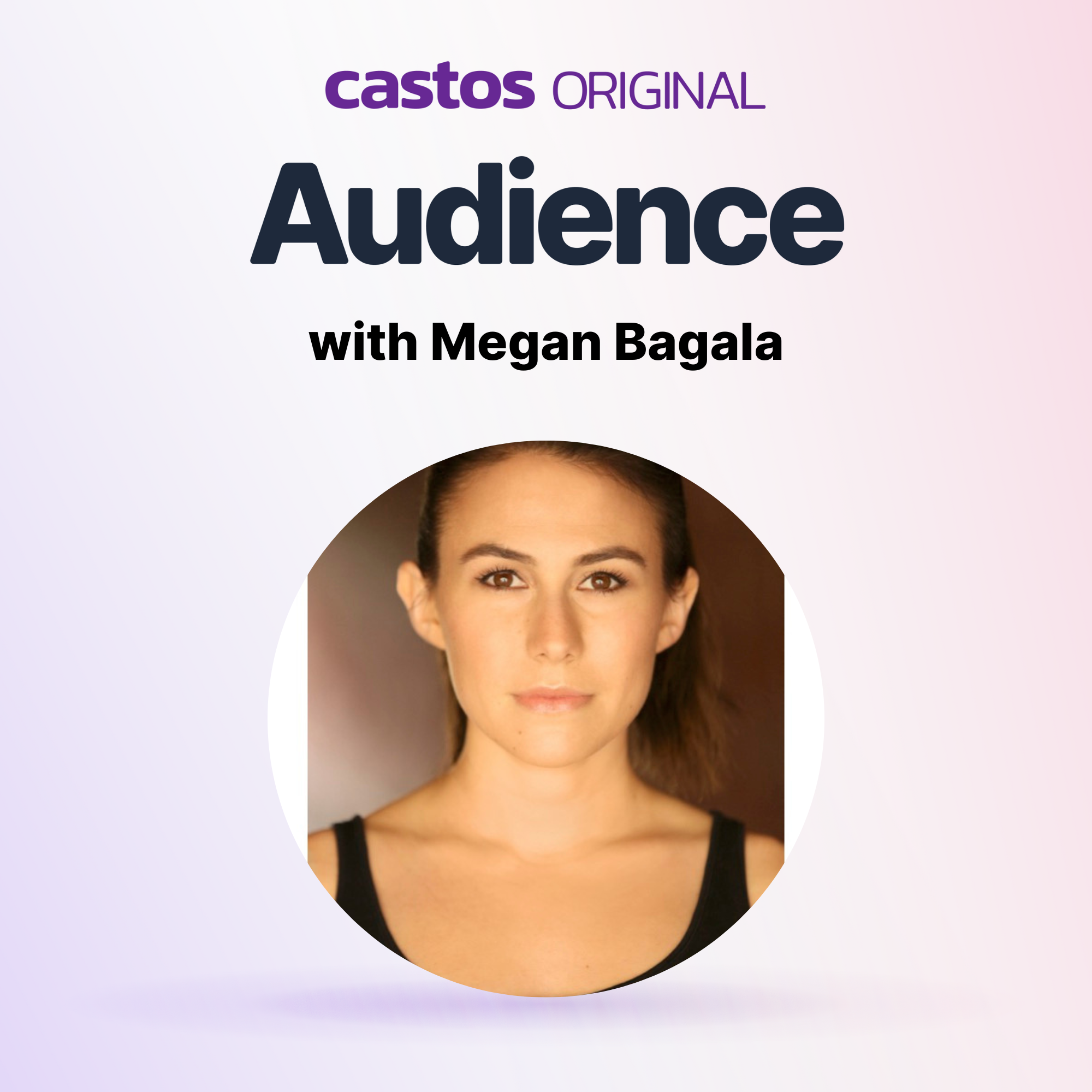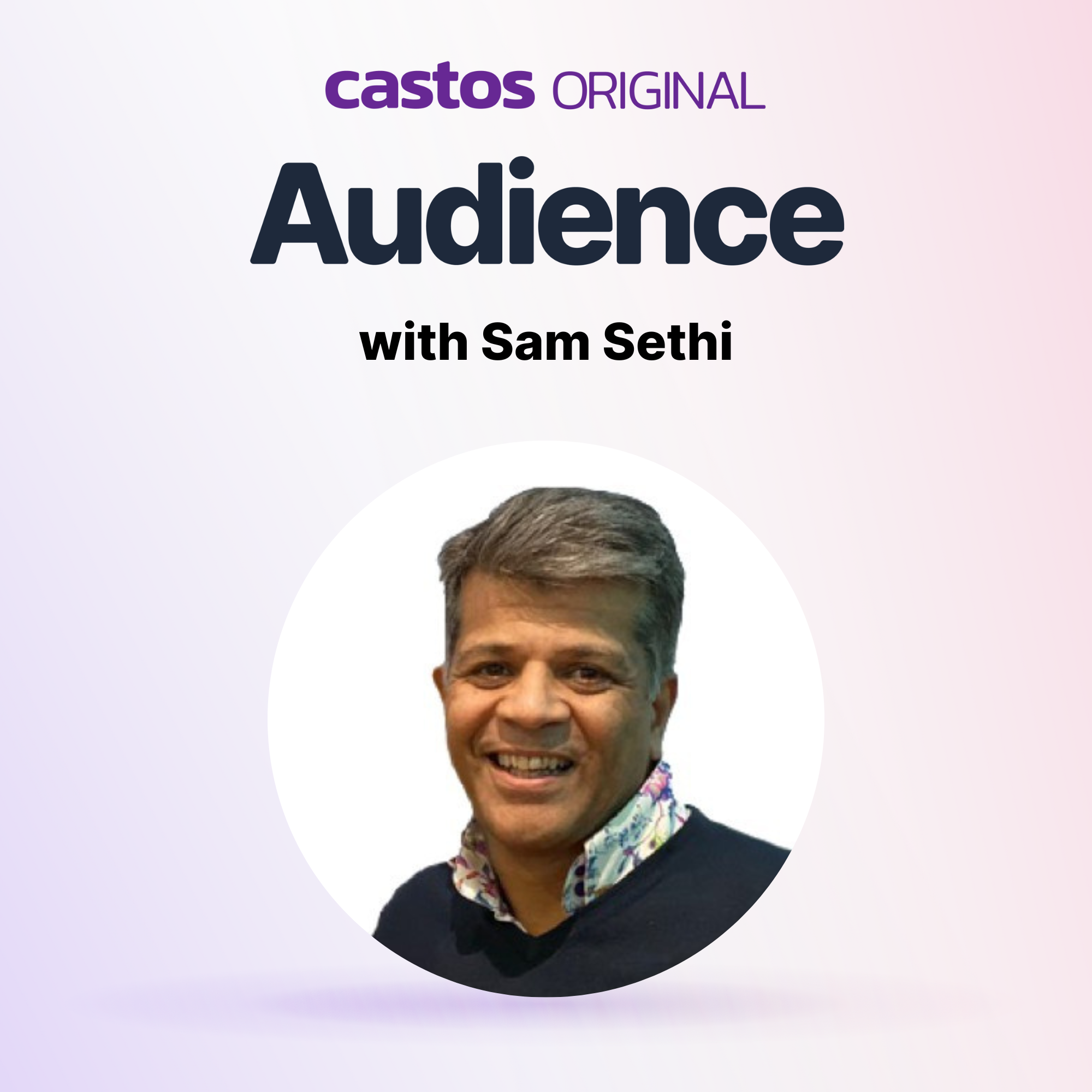Episode Transcript
[00:00:00] Speaker A: The role that artifacts play in telling us about the past is an important one. I think they could almost be like a time capsule or a peek into the past, which is my totally non anthropological take on it. So in the interest of getting back on my lane, I'll also say that I think audio has an important role in making those artifacts more accessible.
[00:00:21] Speaker B: There are a lot of famous New York stories a lot of people know, like the big stories. And I think some of the smaller stories behind these objects are the ones that people don't hear about. And that's, I think, what we're trying to do. It's not necessarily hidden stories, but sometimes forgotten stories.
[00:00:41] Speaker A: Next, Tanya Mohammed takes us inside the podcast, undiscarded to talk about using audio to explore the past.
My name is Stuart, and this is audience a Castos original series where we go behind the scenes of all kinds of different podcasts to uncover their creative process.
But before we get to all the creative stuff, here's a quick note for our podcasters out there.
Creativity is the most important part of the process, and without it, your podcast or your show probably won't get very far.
But you also need a support system, aka Money.
We can help you there. Castos lets you monetize all of your episodes, even the old ones, with a press of a button. There's no chasing sponsors, no extra editing work, none of the headache. You could even tap into your own support network. Let your audience directly support your podcast through one time or recurring donations with Castos Commerce.
For more information, check out the links in our show notes.
Okay, let's get back into it.
[00:01:59] Speaker B: So this is a very small, quirky museum, and it's on a very busy street in South Williamsburg. It's on Metropolitan Ave. And if you passed it by, you wouldn't necessarily even know it's a museum. It's got this bright awning. It's got a really crowded, sort of like window display of all these artifacts. And if you look closely, then you can see little labels in there, but you might think you're passing a vintage store.
[00:02:27] Speaker A: Tanya Mohammed is the host and co creator of the podcast series Undiscarded stories of New York.
Each episode looks at seemingly simple objects and tells the not so simple story behind it. The small, quirky museum she referenced is the City Relicory Museum in Brooklyn, and that's where each of the twelve objects in the series comes from.
[00:02:48] Speaker B: What's different about this museum is that it is basically bought together by the passions of people who are like collectors. It's very grassroots it's kind of like the way to say it is. It's a museum of New York by New Yorkers. It's not a bunch of. Not that there's anything wrong with it, but know really qualified curators or elites. It's kind of community based. And it actually started off as a window display. The founder, Dave Herman, he had an apartment with a street facing window, and he started curating and putting some objects in there. He also painted it and had directions on it. It had some sort of ephemera that he found interesting. And people started contributing to that slowly, slowly, and eventually they found their brick and mortar building. And people would be like, I think this needs to be here. This belongs here. Like, somebody would bring in an artifact, somebody would bring in their collection of old Jackie Robinson baseball cards.
[00:04:01] Speaker A: Undiscarded is a collaboration between the city reliquary and Citizen Race car, a small podcast studio. For their work, Undiscarded was awarded the Best indie Podcast at the second annual Signal Awards. And if you listen to it, you'll see why. Not only does the series shed some light on the history of the items featured, but it's usually a springboard to tell a bigger story.
An old shovel tells the story of New York's aqueducts and how immigrants contributed to the city's infrastructure. A stuffed alligator uncovers a trueish urban legend, and a display cake tells the story of gentrification. And that's just three of the twelve episodes. Letters from a sign, light bulbs. Mannequins, model buildings. Undiscarded uses audio to bring artifacts to life in a way that's immersive and engaging.
New York is not a place that I've spent much time in personally, and I've never been to the city reliquary.
But in the same way that Tanya takes us back in time on undiscarded, I feel like she took me to the museum when we chatted.
[00:05:10] Speaker B: There is something special when you walk into the city reliquary. People wonder, like, why is this object here? Why is this mundane object like this light bulb or this stuffed alligator or this display of, like, happy to serve you New York cups? You wonder what the story is behind that. And I think that's what makes these mundane objects really sort of sing is the New York story it's rooted in. There are a lot of famous New York stories. A lot of people know the big stories, and I think some of the smaller stories behind these objects are the ones that people don't hear about. And that's, I think what we are trying to do, it's not necessarily hidden stories, but sometimes forgotten stories. And that's definitely, you see that coming out. For example, one of my favorite episodes, I know I'm not allowed to say that, but the roller disco episode, we have this dirty, beat up skate hanging from the ceiling of the city reliquary. So you look up and you're like, what is that roller skate? And it turns out it's a roller skate from the Empire Roller disco, which played a huge role in the community. And that roller disco doesn't exist anymore. Actually, it was called the Empire Roller Dome, and it became the roller disco in the. That was another fact I learned, like, New York was actually the birthplace of roller disco. So you go back to the story of the skate, and you find someone who that roller skating place meant so much. You know, that's really special because you get to hear it firsthand. Eric Alston, who we interviewed from that, is actually based in Atlanta now. And he was ready to fly up when he heard about know. Because one of the things we did is we were doing all these interviews in person. There wasn't any zoom or online.
That was, like, a big part of the project. But that's sort of like emotion elicited by so many objects. Like, almost everybody I spoke to was like, yes. How can I be there? How can I get there? How can I do this? And that was really special. And also, the reliquary has been around now for 21 years.
Last year was their 20th anniversary. So in a very reliquary fashion, I guess this is for its 21st anniversary, this show. In some ways, I do kind of.
[00:07:44] Speaker C: Want to zero in on a couple episodes, actually. And I think about the tiny model episode. Before we get into that, can you tell us a little bit about that and maybe some memories you have from making it?
[00:07:57] Speaker B: Yeah, sure. So let me walk you through what the artifact is, or walk your audience through. When you go to the museum, you walk into their main lobby.
They have this display case, and it's full of World's fair memorabilia from all over the place. And they have, like, badges and plaques and models and all these things that you can look at. But one of the things they have is a diorama. And it's this diorama. It's got some photos. It's got a couple of platform. And on those platforms are tiny model buildings, different colors, different shapes. We have some pictures. If you go to undiscarded.org and go to the behind the scenes episodes and these tiny buildings, they look like monopoly pieces are part of a larger, very famous Queen's exhibit. And one of, like, the main attractions in, you know, obviously you have the Statue of Liberty, but this one is really famous, and it's called the Panorama of the City of New York. Have you ever seen it or been there?
[00:09:04] Speaker C: No, I have not. Never? Only virtually. Through your episode, I did kind of feel like I was there, but no, not like in the flesh.
[00:09:12] Speaker B: Yeah. So this is one of the world's largest two scale models. Really exact. And these buildings were about to be discarded. Know, they update the display. They fix it up. Know, for a while they were updating it. And the panorama of the City of New York is actually in the Queen's MuseuM. But what's really cool is the Queen's Museum used to be part of the New York Pavilion in the World's Fair. So there you go. You have the World's Fair in New York, which is so iconic and such a cool, history filled place. You have the panorama of the city, which is a marvel in itself.
Then you have Robert Moses, who was part of that whole process, all the resources and the research going to make this model. It's like history on so many levels. And so that was a really neat episode. And what was cool is we got to collaborate with the Queen's Museum on that. So that's also been a large mission of the reliquary, to kind of collaborate with a lot of community organizations and at times, big museums like the Queen's Museum itself. They used to have. I don't think they have it anymore, but they used to have something called the Panorama Challenge, where city reliquary members used to go to the panorama of the city of New York. And they used to have a quiz show. Somebody with a laser pointer would point to different parts of the scale model, and they'd have, like, New York trivia questions.
So, yeah, that was like a quintessential undiscarded episode because it touches on history on so many different levels. You go into the World's Fair, which touches on the changes of the city.
You go all the way to Queens, which know another borough in New York that not necessarily everybody thinks of when they think of New York. You think of Manhattan or Brooklyn, the two big. You know, also about the collaboration and the connectedness of these wonderful cultural institutions that you kind of don't always know behind the scenes.
[00:11:22] Speaker C: And really a snapshot of what New York was at a certain point.
[00:11:27] Speaker A: Yeah.
[00:11:27] Speaker C: Some of these other objects that you pick, know, first of all, there's millions of objects in New York City, right?
Millions is probably underselling it a little bit. There's probably billions of objects in New York City. So what's the selection process like for objects for your episodes? Because you kind of narrowed it down to like, whAt, eight or nine episodes maybe?
[00:11:49] Speaker B: We had about twelve episodes. Well, our one step was easier. We had to limit to objects in the city Reliquary museum. So we did not have billions of objects.
I believe the reliquary does have the biggest Statue of Liberty Statuette collection in the world. So they have statuettes all the way from the late 18 hundreds to now. And it's really interesting to see how they've changed. But yes, so we were limited to the objects in the, you know, it was this real sort of like we, I think our initial list, and I worked with Jacob Ford, who's our contributing producer, know, very involved with the reliquary. He also has another interesting museum, which is in an elevator shaft. So he's just one of those guys about town who's into these strange sort of things. So he helped me because of his experience with the reliquary, narrow down it to pretty objects. And then we sort of, like, dug into the research of why were these objects significant? And we really kind of wanted to balance the different aspects of New York. So we opened with the Statue of Liberty, because what is really more iconic than the Statue of Liberty? When you think of New York? But then you also have a Jewish deli episode, which was really cool because for that particular episode, we got to go off site. We went to the New York Historical Society, which was having a really big exhibition on Jewish Delis and the history of Jewish delis in New York and around the country and the city. Reliquary had lent their second Ave deli sign to the New York Historical Society for this.
You know, you have the Statue of Liberty, you have Jewish Delis. Then we had the tiny models, which is not only is it in Queens, but it is part of the World's Fair, which is another really huge part.
Bunch of New York characters. Robert Moses, Lester and associates, who worked on it, the Queen's Museum. So we kind of tried to balance out all these different aspects and areas of New York. I didn't get to hit all the know. Definitely like to do something with the Bronx. Definitely need to do, you know, we got two Queens episodes, which is where. So, you know, I was happy about that. So I think we kind of narrowed it down. It was a combination of access feeling and know that was kind of like the special formula we were going for in terms of picking and choosing the artifacts, but there were still so many more artifacts to choose from.
[00:14:41] Speaker C: Speaking of something that's very New York, the Subway Token episode. I like that a lot because I studied urban geography when I was in college, and so anytime I can listen to people talk about public transportation, I usually jump at that opportunity. And so this was kind of gift wrap for me, this episode. I really like that a lot. What was your biggest takeaway, or what was the most surprising thing you learned in that episode?
[00:15:08] Speaker B: So that was really an interesting timing for us, because in New York, the subway system is switching from the Metro card. It's switching right now to what's called OmHn Y, and you get to tap your credit card and go through. So in a way, you're kind of returning to the payment value, because when the subway token started out, it was a nickel and then it was a dime. And then when they raised the fare to $0.15, they had to figure out what to do, and that's when the token came into play, because they didn't have a 15 cent coin. And then there were, like, commemorative tokens. There were all sorts of tokens. There were some tokens that were reviled. There were some tokens that were beloved. There's this one very famous, popular token. It's the one with the New York sort of cut out in it. It's a Y token, and that's used in jewelry. It's used in signs. So it was kind of cool to do that episode at a time when we were changing again, we were moving away from the Metro card and going back to that form of payment. So that was definitely a neat episode. And again, speaking of New York, Icon, Statue of Liberty, the New York subway is one of the most well known subway systems in the world.
[00:16:29] Speaker A: Yeah. Well, I liked how it was such.
[00:16:31] Speaker C: A springboard to that bigger story about public transportation and what that means for a society and what it means for a government to invest in infrastructure and invest in its people and the broader implications of that. I really, really enjoyed that aspect of the episode.
[00:16:50] Speaker B: Yeah, I mean, the subway is definitely, like, the lifeblood of New York. It's how everybody gets to work, how everybody gets to places, how people have access to the city by the subway. You can definitely even travel three boroughs in one day for different. You could go to, like, a Yankees game, and then at the same day, go all the way down to downtown, know, hop across the Statue of Liberty or there's definitely access that you don't get in other places. And it's hard to imagine for me now being here, living somewhere where you don't have that convenience factor. I think, as you'll see the theme from some of our episodes, we are trying to hang on to that originality. New York is changing, too.
There's condos coming up. Whole neighborhoods are being raised.
I'm not a longtime New Yorker. I've only been in New York since 2006, 2007, and I've seen, like, down the street from me. I live in this neighborhood called Sunnyside. Used to have a view of the New York skyline. Like, you could see it really well and clear. And now it's all obscured by new high rise condos that were built in Long Island City just over the past few years. So I think what the city reliquary tries to do is hang on to those things as neighborhoods are changing. The old roller skate, the Second Ave. DelI Sign, where the second Ave Deli used to be, used to be a big Jewish neighborhood. The lorry side used to be full of all the immigrants who had come in. Those were, like, meeting places, and that's not the case anymore. And someplace like the Second Ave. DElHi closing is a sign that that community doesn't exist as it did. It's been assimilated. So a lot of the objects we talk about are like that. The newsstand is a perfect example of that.
[00:19:00] Speaker C: And you chose to end the series or not the series, I'm sorry, but you chose to end season one with an episode called Display Cake. And that's a pretty fascinating one, because you take something kind of like a display cake, which is usually kind of, I would say, like something that represents. Usually like something festive or at least something delicious. I like cake. Most people do. But I would say of all your episodes, this maybe took a little bit of a. I don't know if Dark is the right word, but maybe a more solemn, sobering turn, because you really talk about the issue of gentrification.
[00:19:38] Speaker B: Yeah, that is a theme throughout a lot of our episodes, but I feel like that last episode captured all of those tied up, all those themes really well. It was a favorite for many reasons. One, we bought it back to the neighborhood of the city. Know, like I said, we were in the Upper west side. We were in Corona. We were in, you know, we were in Midtown, Lower Manhattan, and then we got to bring it back to the reliquary, which is in South Williamsburg. But then on top of that, we spoke about a neighborhood that used to be there, that doesn't really exist anymore. It used to be called Losoris, which basically is translated to the South. And it was a very vibrant Puerto Rican Dominican community in the 1960s and 70s, often a very tough neighborhood. And the display case, like you said, no spoilers, was part of a Mexican bakery that was in that neighborhood. And it almost closed very radically overnight. They couldn't make their rent, their rent raised. And this display cake used to be in the window. And it wasn't just an ordinary display cake. It was a very personality, quirky filled display cake. It had kind of like a nudie doll, pin up doll on the top, and like a neglige. And you're like, why do they have this in the window of a bakery? I never got to see the bakery, but our founder, Dave Herman, used to walk past it all the time, and a lot of people remember it. Even if they didn't go into the bakery, they remember seeing that. So as they were shutting, this cake was given to dave to put in the know. He came in, find out what was going on. And that in itself, being able to hang on to that memory of this place, of this neighborhood as it was, is kind of the gist of the whole series. And also what was really cool about this. And I was trying to figure out, who's the guest I can get for this episode. I tried to track down the owners. They've moved. I think they've moved down south. They're no longer in the neighborhood. I couldn't find anybody who had worked there. I was trying to find somebody who was a regular. It was really hard to track down information. It was almost like Borderline Yelp time. It was like 2013 when it closed, it was hard to get pictures of it. And through Google searches, I think it was probably 02:00 a.m.. Whatever. As you get into this rabbit hole when you're working on a show. I found this author, Richie Narva's, and he grew up in the neighborhood, and his first book was called Hipster Death Rattle, which was all about the gentrification of his neighborhood that he knew growing up South Williamsburg. And I was like, there we have our guests. So it was like the perfect culmination, quirky, know, story of change in New York and also having the perfect guest. So it made sense to end on that note and also really something that was very sentimental to the people at the reliquary who had been in the neighborhood around the time.
[00:22:55] Speaker C: And I think something that's also, while very specific to that place in time also kind of hits, I think, on a broader theme, a very, very sensitive subject. That's kind of true anywhere in America. Gentrification, I mean, it can happen.
[00:23:12] Speaker B: You know, I lived in Los Angeles for years, and I was in West Hollywood, and same neighborhoods changed before my eyes. And I went back a couple of years ago, and they were just like high rises on both side of the street. I'm like, where are the small one story buildings and the Gothic video store?
And I think people remember certain places they went to that they walked past every day that they remember going into, and then all of a sudden, that place is not there anymore.
[00:23:52] Speaker C: And there's something about, like, when you're young, everything seems, I think, a little bit more exciting, even if it's maybe not, even if the neighborhood is maybe not the best version of itself, or even if there are issues. There's something about when you're young and how you remember things and experience things that are incredibly special, I think. But I mean, I watched the Los Source documentary that's on the City Relocary website, and it's a beautiful documentary.
This is 1984, and they were already, I think, grappling with the changes in the neighborhood. And this was 1984 nearly, nearly 40 years ago at the time of this recording.
So now, of course, it's not recognizable in 2023.
[00:24:39] Speaker B: Yeah, there's small holdouts. You can see there's still a couple of restaurants. I know that there is this 1 bar over there, tonitas. And I believe they're involved in, like, a court case trying to stay there. But I remember accidentally stumbling into there. My brother was in town, and we went to a lot of the sleek, nice bars in Williamsburg. I was like, where can I take my brother out in the city? And somehow we stumbled upon this place, and it was like you entered some sort of time machine.
It was just felt very out of place in what the neighborhood was. But it was beautiful and wonderful. And so there are still few holdouts in the neighborhood, but for the most part, it's fairly unrecognizable. And I was really grateful to Union docs. They were able to just give us a code. This was a big part of their living Losaurus project. The significance of this neighborhood, for example, is like they did a whole sort of, like, archival project around it. And actually, there's even a link to, I don't know if you got to see it, the last bread, which is the last day of La Vegeta Bakery, which the display cake is from. I'll send you the link to it, but that's also available if you order the behind the scene blog. Somebody did as part of this, you know, for me, as someone who's not grown up in New York, I was like, how did I not know that there was an entirely different neighborhood know? So that was a really cool part of this process, was as an outsider, as someone who's not like a historical archivist, to learn about my city now that I live in and learn these stories and learn some backgrounds of things that you didn't know about. So that was really cool. And also the union docs making that available, I think that was one part I really enjoyed, like having a robust archive behind these episodes. I reached out to so many photographers, can we use your photos? Can we use them on Instagram? Can we put them on our blog? I reached out to so many artists.
Those sort of collaborations are kind of like at the heart of the city reliquary. So it was kind of nice to be able to gather this extra information and be able to provide it as a backdrop to the episodes as well.
[00:27:06] Speaker C: Yeah, well, it makes it, I think undiscarded is a real immersive experience because it can be passive listening. You can listen to it while you're driving or while you're cleaning or however, because I know that's what a lot of people do when they listen to podcasts. But you can also, in my case, be at the computer going kind of down that rabbit hole of information. One of the good rabbit holes that you can find in the Internet, I should say. Like you said, just like Googling the pictures of those city panorama and watching the documentaries and looking up the pictures of these things. And I usually like to wait. Anytime I'm dealing with a podcast that's dealing with, or anytime I'm listening to a podcast that's dealing with an object or something very visual, I like to wait until after I've listened to the episode to go and look it up, because, I don't know, I think storytellers like you and your guests do such a good job of painting a very vivid picture, and because it is an auditory medium that I like to kind of respect the craft in that sense. But, yeah, my curiosity always gets piqued afterwards, and I go and kind of cast a wider net and see what else I can learn.
[00:28:16] Speaker B: Yeah, I think that was the point of the collaboration, definitely between the reliquary and citizen race car. I can't take credit for the idea. That was our principal, David Hoffman, who was at Citizen Race Car. He kind of was like, we should do something in the city. We have so many great institutions. And I had featured the city reliquary in my last show and kind of had known about them for a while. A friend of mine who, he had his 50th birthday in their backyard where they hold community events. They also have like, private events, but they have a lot of interesting events, which is also the part. Their full name is the City Reliquary Museum and civic organization.
So this grassroots community outreach part is a large part of their identity. And yeah, I think it was great for me to learn so much about the city and be welcomed as part of their family and be able to celebrate with them and get a little obsessed. Get a little obsessed. Like you said I was spending, I'd put in a hashtag like LoSaurus and see all the pictures that would come up and be like, can I use this?
It's an interesting process. And also, you realize there's so many podcasts out there. It's like hard to be an indie podcast with not the resources like a big media machine trying to promote it and trying to get it out there and try to make those collaborations.
I'm sure you know that too, with your podcast. It's one thing to make it, it's another thing to kind of get it out there.
[00:30:02] Speaker C: Yeah, that part, I don't really have any pointers because I don't really know myself. But you did win, you won a signal award for Best indie podcast. So congrats on that, by the way.
[00:30:12] Speaker B: Yeah, that was really exciting. Like I said, like you said, we spoke about podcasts being like giving birth, so it's good to get that sort of recognition especially. I was amazed. They had a party a couple of weeks ago and I was like, damn, this is a lot of podcasters.
And I met a few people. I'm like, I'm just not going to be able to do anything. I'm just going to have to listen to shows for the next three weeks because of all these people I've met. It's interesting to sort of strive to put a story out there in a time when there are so many podcasts. Like if you go back like maybe 15 years ago, there weren't as many. It was in such a crowded space. But that's also what's really great about podcasts, is anybody can do it, right? Anybody with a microphone or without a microphone. I'm sure you've heard a lot of podcasts with terrible sound quality.
If you have something to say, you can put it out there.
[00:31:11] Speaker A: Everyone has a curious mind on some level, and it takes the right kind of storyteller to engage it. Tanya and her guests do exactly that with each episode of undiscarded shovels, cakes, subway tokens, and roller skates might all seem utilitarian, but these artifacts also tell bigger stories, and Tanya is the perfect curator for them.
And now it's time for our podcasting tip, where our guests bestow some wisdom on the rest of us.
[00:31:42] Speaker B: My name is Tanya Mohammed, and I'm from the podcast Undiscarded stories of New York from the City reliquary and Citizen Race car. And my podcasting Tip is trust your gut. If you think there's a story there and it's something you keep coming back to, go there. Dig deeper. Research it. Find out if someone's done before, even if they have done it before, don't be discouraged. There's probably something uniquely you in your perspective. So go for it. What's the worst that can happen?
[00:32:19] Speaker A: Audience is a Castos original series. Our founder and executive producer is Craig Hewitt. Production assistance is provided by Esell Brill, Jocelyn Devore, and Marnie Hills. Our website and logo design is courtesy of Francois Brill, our head of Product here at Castos. All music comes from the Storyblocks Library. This episode was written, edited, narrated, and produced by me. I'm Stuart Barefoot. Check out AudiencePodcast FM for more episodes, or just search for it anywhere you get your podcasts.
Next time on audience is the season three finale. When I talk to radio and podcast reporter David Weinberg about his series Dreamtown.
[00:33:04] Speaker D: One of the ways I pitched the story, I was like, well, it's kind of a psychedelic know. It's about this town in peril. Stranger comes to town, literal gun toting Stranger in, like, a straw cowboy hat and tie dye shirt, and is like, I want to save the know, which is, like, such a trope of Westerns. And so I was like, well, well, let's lean into that. Let's kind of subvert that in some ways, but also create a frame around this show that feels like an archetypal Western story. And I sort of use some references from those things in the story to highlight those points.
